Confession: When I was a kid, on more than one occasion I licked salt (not sugar, salt) off my plate.
The recipe
Yield: 12 rolls
Time: 3 ½ hours
Ingredients
Dough:
¾ c (160 g) whole milk
2 ¾ c (330 g) bread flour
4 tbsp (57 g) butter, room temperature
2 tbsp (25 g) sugar
1 egg
1 tsp (6 g) salt
2 tsp (8 g) yeast
Filling:
½ lb (230 g) pork belly, chopped into ½-inch pieces
2 tsp sugar
¼ tsp salt
3 tbsp (75 g) ssamjang
water
Instructions
1. Heat milk in the microwave until warm but not hot (90-95°F, no hotter than 97°F).
2. Put the flour, butter, sugar, and egg in the bowl of a stand mixer fitted with the dough hook attachment. Add the salt to one side of the bowl and the yeast to the other. Add the warmed milk and mix on low, scraping down the sides of the bowl, until combined and no floury bits remain.
3. Mix on medium-high speed for about 10 minutes. Your dough should be soft and shiny and very stretchy when it’s done.
4. Put the dough in a bowl, cover it, and leave it to rise until noticeably bigger in size but not necessarily doubled, about 1 hour.
5. While the dough is rising, prep the filling. Pat the pork belly pieces dry. Mix the salt and sugar in a bowl and then sprinkle it evenly over the pork belly, using your fingers to massage it in and evenly coat the meat.
6. Heat a skillet over medium. Once hot, add the meat to the skillet and cook, stirring occasionally, until the meat is light brown and cooked through. Set the pork aside to cool.
7. Mix the ssamjang with just enough water (a teaspoon or two) so that it will spread easily with a pastry brush.
8. Line two small baking sheets with parchment paper.
9. When the dough has risen, gently use your fist to punch it down, then turn it out onto a lightly floured counter. Flour a rolling pin to keep it from sticking and roll the dough out into a rectangle about 8 inches tall and 15 inches wide.
10. Brush the ssamjang onto the dough, all the way to the edges, but leave a small ½-inch section on the bottom of the rectangle bare. (It will be a thin layer.)
11. Evenly distribute the pork belly over the dough.
12. Wet the bottom edge of the rectangle (the part without the ssamjang) with your fingers. From the top of the long edge of the rectangle, roll down to the bottom long edge, forming a swirl. Roll the whole log a few times to seal the bottom edge.
13. Using a knife, make shallow scores on your log of dough to cut it into 12 even rolls. Use dental floss to actually cut the rolls for a clean edge. See this GIF on King Arthur’s website for a how-to.
14. Place the rolls on the lined baking sheets and cover with plastic wrap or plastic bags to rise for an hour, until they look noticeably puffy and your finger leaves a slight indentation when you poke the rolls gently. If the dough springs back all the way, they haven’t risen enough, and if the dough doesn’t spring back at all, they’ve over-risen.
15. Preheat your oven to 375°F while the rolls are halfway through the second rise.
16. When your rolls are ready, bake them for 11-13 minutes, until lightly brown on the tops.
17. Transfer the rolls to a wire cooling rack and once cool, store them in an airtight container in the fridge or freezer. To serve from refrigerated, toast on the gentlest setting on a toaster oven, or warm in a 350°F oven for 5 minutes.
Notes and tips
Ssamjang is a Korean sauce/spread made from soybean paste and red pepper paste. It’s salty and a little spicy.
Pork belly is different from bacon. It’s from the same part of the pig, but instead of being salted, cured, and smoked, it’s just regular raw meat.
Enriched doughs (dough with extra fat in them from ingredients like butter, eggs, and milk) take longer to rise, so warming the milk gives you a head start and a good rise even if your kitchen is cold. However, warming your milk to over 97°F could kill the yeast when you add it to the dough.
To help your dough form a rectangle shape, pull the corners into a rough rectangle before you begin to roll it out, and stop rolling periodically to gently shape the dough into more of a rectangle.
The story
I’m obsessed with salt, but it runs in my family. My grandmother’s gravy is the saltiest around, and I grew up loving her meatball soup, which is full of sodium. And she remembers her father salting everything heavily, just like I do.
My husband took me out to Korean BBQ for the first time when we were dating, and he showed me the proper way to eat it—meat stuffed in a lettuce wrap with rice and this brown, lumpy-looking paste called ssamjang. It didn’t look incredibly appealing, but after a few bites of its salty, spicy deliciousness, ssamjang became one of my favorite things about Korean food. I fell in love so hard that I did the white person thing of “discovering” a delicious Korean ingredient and using it in all kinds of non-Korean foods. I’m a little embarrassed by it, but those choices resulted in some delicious combinations. (If you want to try for yourself, I recommend adding ssamjang to mac and cheese and fried rice that needs a flavor boost.)
Since I’d already done it, I thought I might as well continue the white person thing and use ssamjang as a swirl in a savory roll. The first time I tried this recipe, I used ssamjang by itself in the middle, and it was too salty and missing something. I was surprised. My favorite sauce, letting me down? I tried again, thinning the ssamjang with water to cut the saltiness, and the bread was still lackluster. It was only when a few of my taste-testers recommended adding meat to the rolls that things clicked for me. I had been too white about this recipe. A literal translation of “ssamjang” is “wrap sauce,” and Koreans most often eat ssamjang in wraps composed of lettuce, rice, and meat, like pork belly or marinated steak, the same way I’d had it in that Korean BBQ restaurant the first time I tried it. So when I added some seared pork belly, the result was a roll where the ssamjang tasted as amazing as usual because it was used more like the way it was intended to be.
P.S. Here are some process pictures of making the rolls.
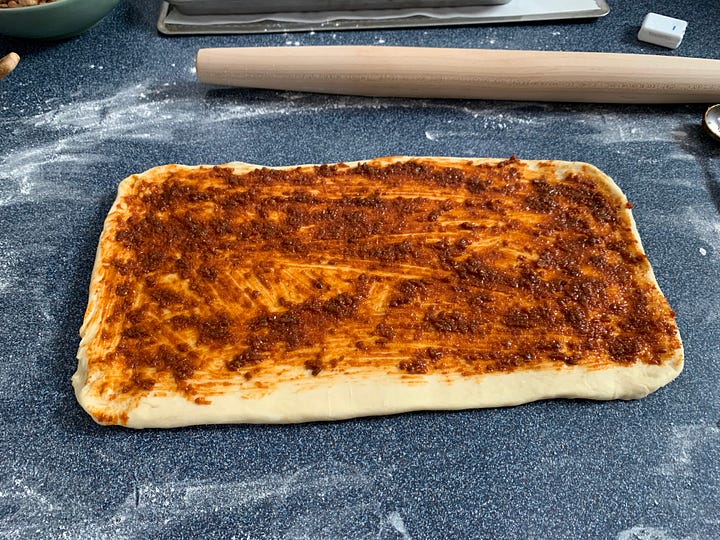
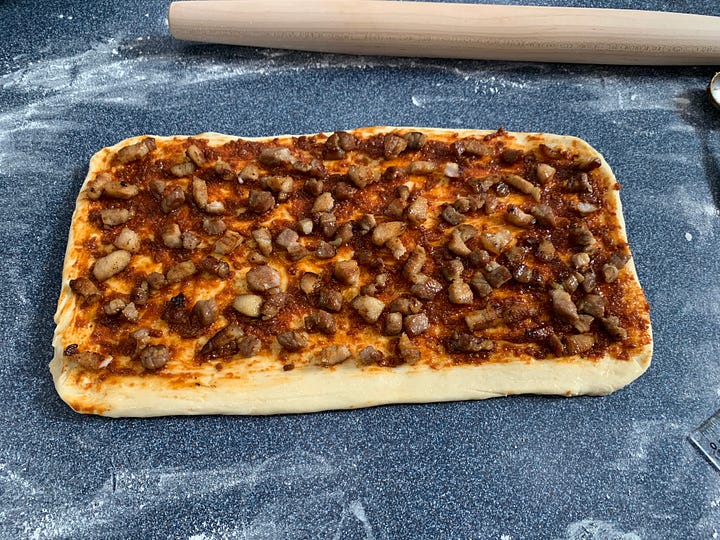
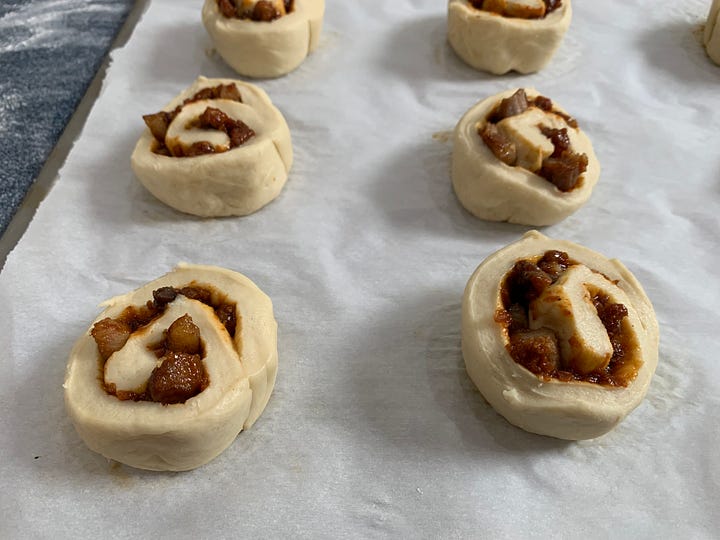
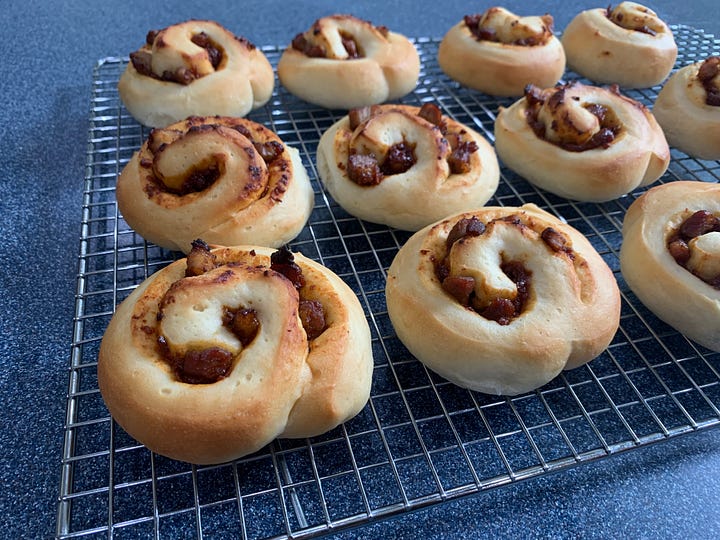
The next recipe!
These rolls are part one of a two-part series on breads featuring Korean ingredients. The next recipe (coming in two weeks) is for gochujang rolls, which are filled with the spicy red pepper paste that is one of the main ingredients in ssamjang.
Spread the snob
If you like this recipe, please recommend Confessions of a Cake Snob to someone you know! Please share this newsletter with a friend, comment on the website, or bake it and let me know how it went for you! Email me with comments, things you’d like to see, and suggestions at confessionsofacakesnob@substack.com. I’m excited to hear from you!



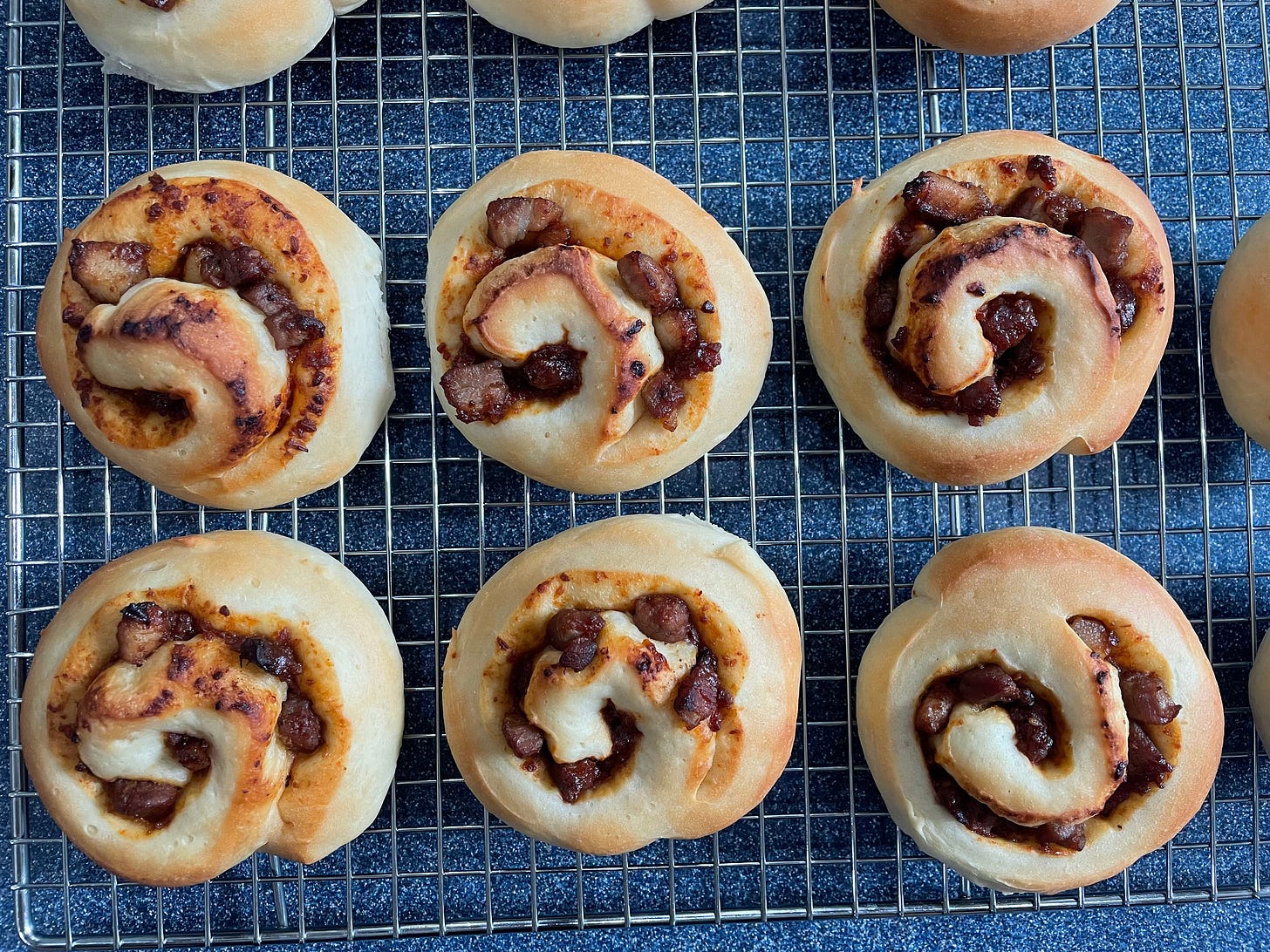
As a Korean person I endorse these rolls
Every time I open the freezer and remember I ate the last one three months ago I get sad